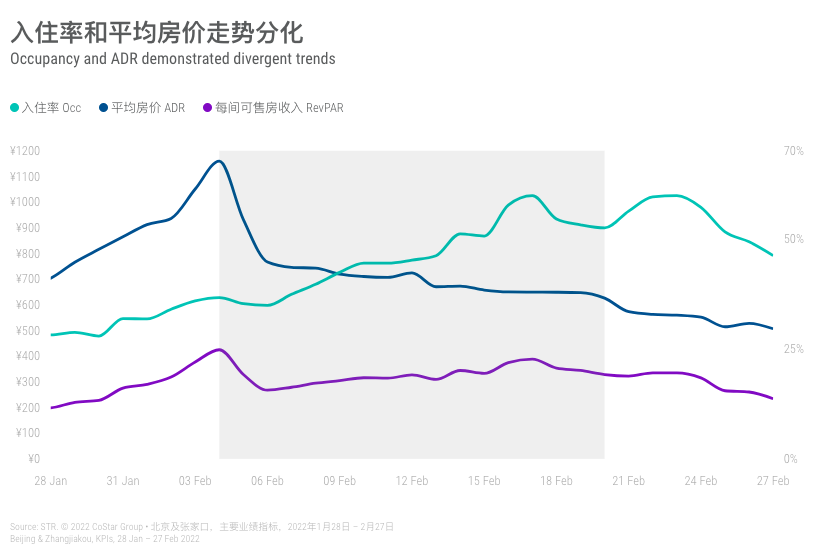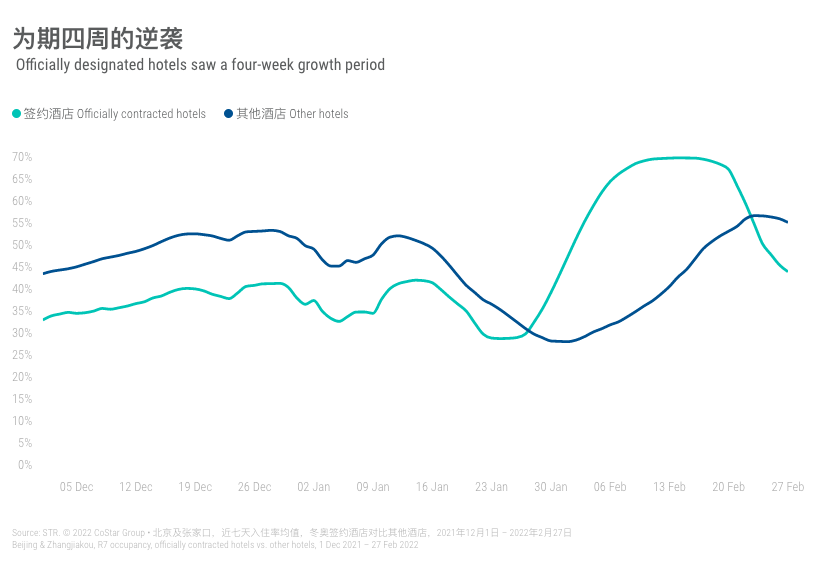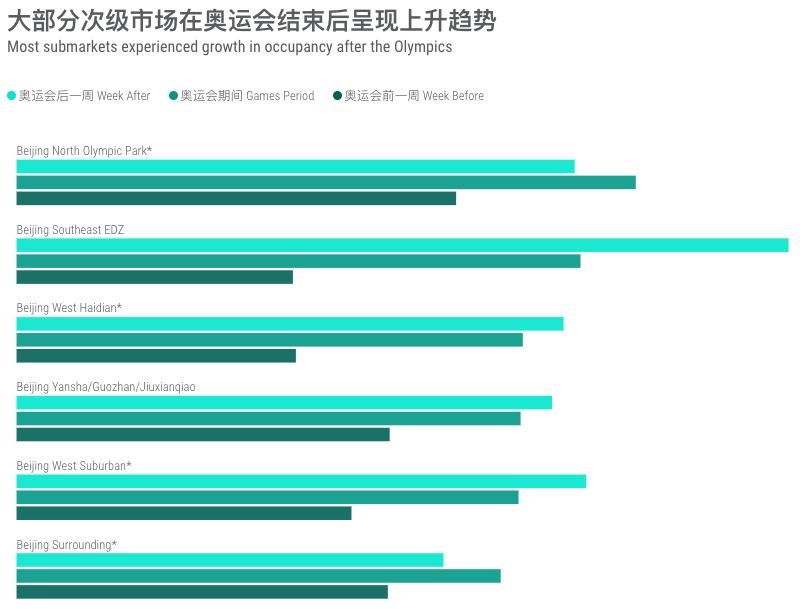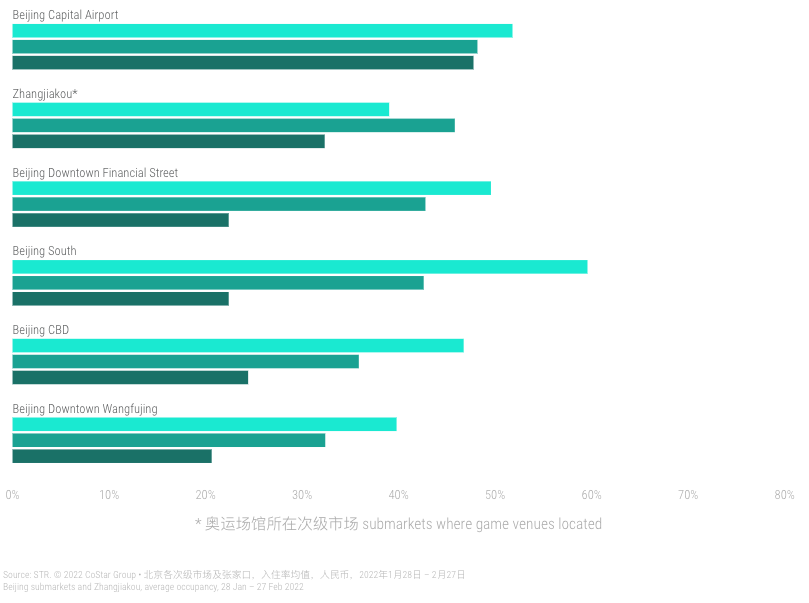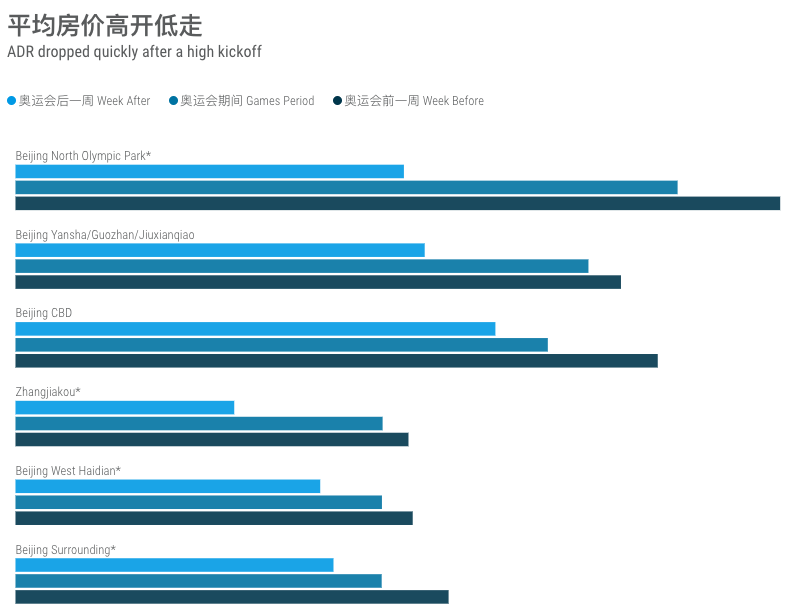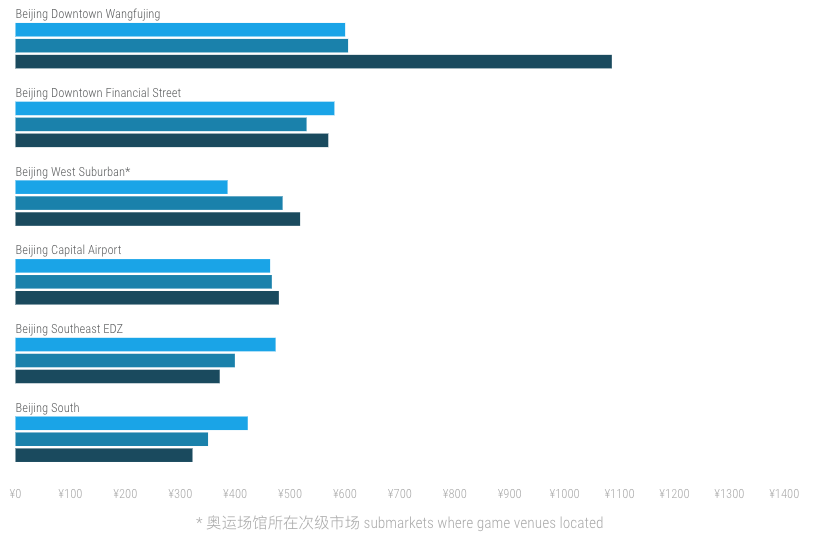Following the Beijing Winter Olympics and Paralympics, China’s domestic ice and snow economy continues to boom. According to the latest data, the number of participants in ice and snow sports across the country reached 346 million after the Olympics achieved nearly 600 million domestic TV viewers. However, as the second host city of a pandemic-era Olympics, how did Beijing’s hotel market fare? What were the performance differences among the city’s submarkets? How did that performance compare with pre-pandemic periods?
As the world’s largest provider of hotel data and analytics, STR is pleased to provide this latest market overview for Beijing.
Overall performance
Since the Winter Olympics partially overlapped with the Lunar New Year holiday, and because the event was only open to invited attendees, the hotel performance indicators were influenced by multiple factors.
Overall hotel occupancy for Beijing and Zhangjiakou increased slowly from the week before the opening of the Olympics. Levels continued to rise, driven by the gradual return of business demand after the Lunar New Year holiday, and the increasing popularity of the Olympics. Occupancy reached nearly 60% after the closing of the Games on 23 February then began to decline.
Different from occupancy, Beijing’s average daily rate (ADR) demonstrated a downtrend trend. ADR in the week of the opening ceremony eclipsed CNY800 and peaked on the night of the opening ceremony at nearly CNY1,200. After the opening ceremony, hoteliers were unable to maintain that growth as ADR quickly fell below CNY800. Revenue per available room (RevPAR) also only exceeded the CNY400 mark on the day of the opening ceremony. For the rest of the time, fluctuations were relatively small and generally stable.
Among hotels in the market, there is no doubt that the officially designated hotels benefited the most from the Winter Olympics. In terms of occupancy rates, officially designated hotels led other hotels by a large margin during the Olympics, with a difference of up to 40 percentage points, and that advantage remained for nearly four weeks. However, in the long run, with the same overall trend, the usual occupancy rates of officially designated hotels lag that of other hotels by about 10 percentage points, which is relatively weak.
Submarket performance
Except for Zhangjiakou, all submarkets with Olympic venues reached more than 50% occupancy during the Olympics.
The Olympic Forest Park area, where the Bird’s Nest and Water Cube are located, demonstrated the most notable performance during the Olympics, with an occupancy rate of 64%. Although no Olympic venues were in Beijing Lufthansa, Guozhan, and Jiuxianqiao, these three submarkets also performed well during the games with occupancy levels above 50%, outperforming main business districts such as Financial Street, Wangfujing, and CBD. Occupancy rates in other submarkets were relatively weak during the Olympics. One week after the end of the Olympic Games, occupancy surged with growing business demand in the southern part of Beijing and the Beijing Economic-Technological Development Area.
In general, with the impact of the pandemic and restricted access to uninvited and foreign audiences, the Winter Olympic growth of hotel occupancy rates was relatively limited.
The general trend of RevPAR in all major submarkets remained predominantly the same and continued to rise in the week before the Winter Olympics.
The Olympic Forest Park area, Lufthansa, CBD, and Wangfujing districts all exceeded the CNY1,000 mark. The highest RevPAR was close to CNY1,400 in the Olympic Forest Park area. RevPAR fell sharply one week after the closing ceremony of the Olympics, and the Olympic Forest Park and Zhangjiakou submarkets dropped by roughly 50% compared with the week before the opening. Performance in other submarkets did not report any significant highlights, and the basic trend was consistent with the changes in demand during the Lunar New Year holiday. With the end of the holiday, business demand returned, and RevPAR recovered slightly.
From the week before the Winter Olympics to the week after the closing ceremony, the RevPAR of Beijing’s key submarkets and Zhangjiakou district all surpassed comparable 2019 levels. Benefiting from growth of both occupancy and ADR, the Olympic Forest Park became the only submarket with RevPAR exceeding CNY200. The stimulating effect of the Winter Olympics was evident.
Although Beijing’s surrounding markets did not have any Olympic venues, Winter Olympics service hotels and demand for tourism during the Lunar New Year holiday kept performance strong, with RevPAR levels highly comparable to that of Zhangjiakou. Surrounding Beijing Yansha, the growth rates of the the western Haidian district and other suburban markets were relatively low. RevPAR performance was slightly above but remained mostly the same when benchmarked to comparable 2019 levels. All other submarkets lagged quite an extent from 2019 performance.


